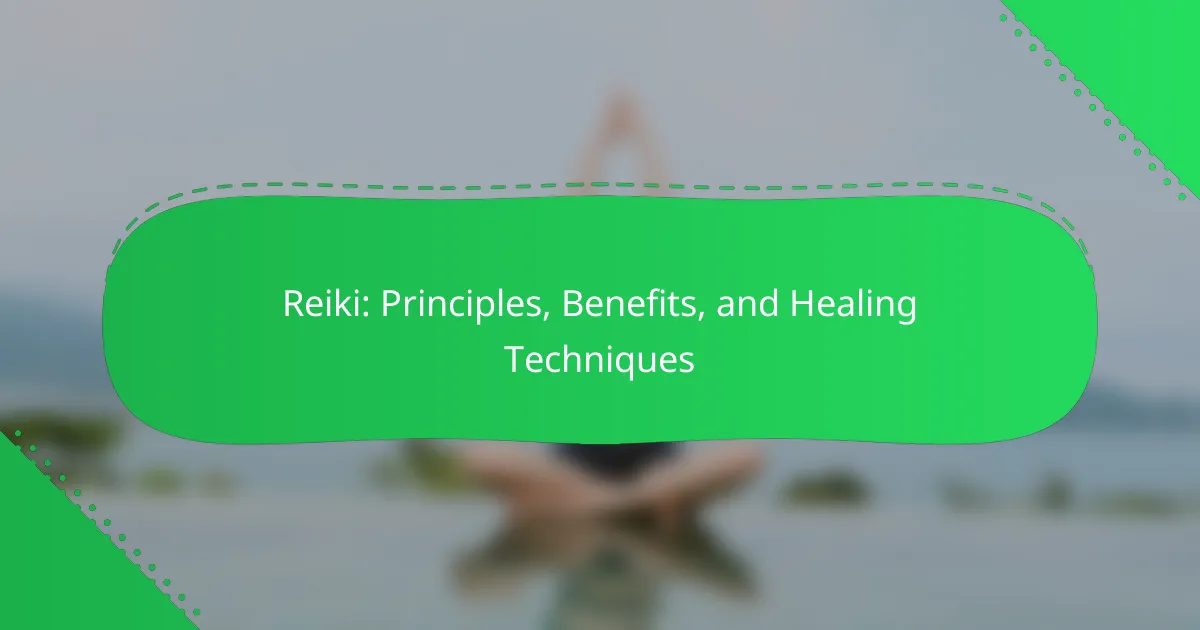Reiki offers a holistic approach to healing, promoting stress reduction and emotional balance. This practice is guided by five fundamental principles that encourage mindfulness and personal growth. Explore the benefits of Reiki, including pain relief and improved sleep quality, as well as various healing techniques such as hand placements and distance healing. Understand cultural variations and address common misconceptions to enhance your Reiki experience.
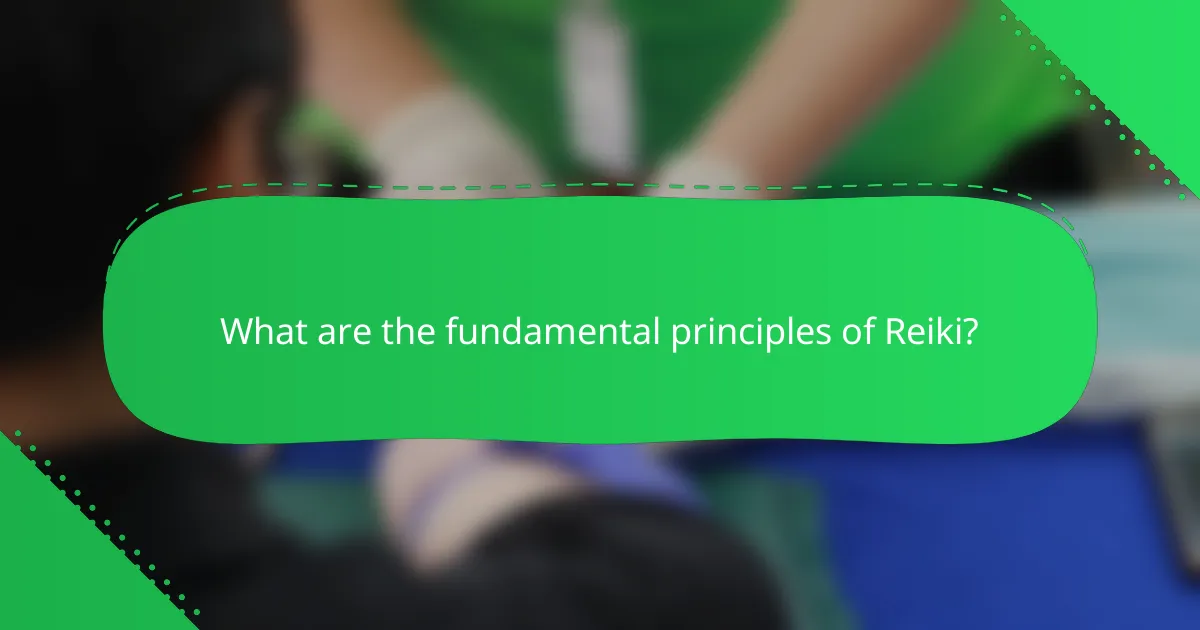
What are the fundamental principles of Reiki?
Reiki is based on five fundamental principles that guide practitioners toward a balanced and harmonious life. These principles encourage mindfulness, compassion, and personal growth, promoting overall well-being.
The five principles are:
1. Just for today, I will not be angry.
2. Just for today, I will not worry.
3. Just for today, I will be grateful.
4. Just for today, I will do my work honestly.
5. Just for today, I will be kind to every living thing.
These principles serve as a foundation for Reiki practice, fostering a positive mindset and enhancing the healing process. By integrating these principles into daily life, individuals can experience greater peace and emotional stability.
How does Reiki promote balance and harmony in life?
Reiki promotes balance and harmony in life by channeling energy to restore physical, emotional, and spiritual well-being. This practice encourages relaxation, reduces stress, and enhances overall health. As a result, individuals often experience improved mental clarity and emotional stability. Reiki’s unique attribute lies in its ability to facilitate self-healing, allowing practitioners to connect with their inner energy. Regular sessions can lead to deeper states of peace and alignment, fostering a harmonious existence.
Why is the concept of universal life force energy essential in Reiki?
The concept of universal life force energy is essential in Reiki because it serves as the foundation for healing practices. This energy connects all living beings and facilitates the flow of healing. Practitioners channel this energy to promote physical, emotional, and spiritual well-being. Understanding this energy enhances the effectiveness of various Reiki techniques, enabling practitioners to address imbalances and support healing processes. The unique attribute of universal life force energy differentiates Reiki from other healing modalities, making it a vital aspect of its practice.
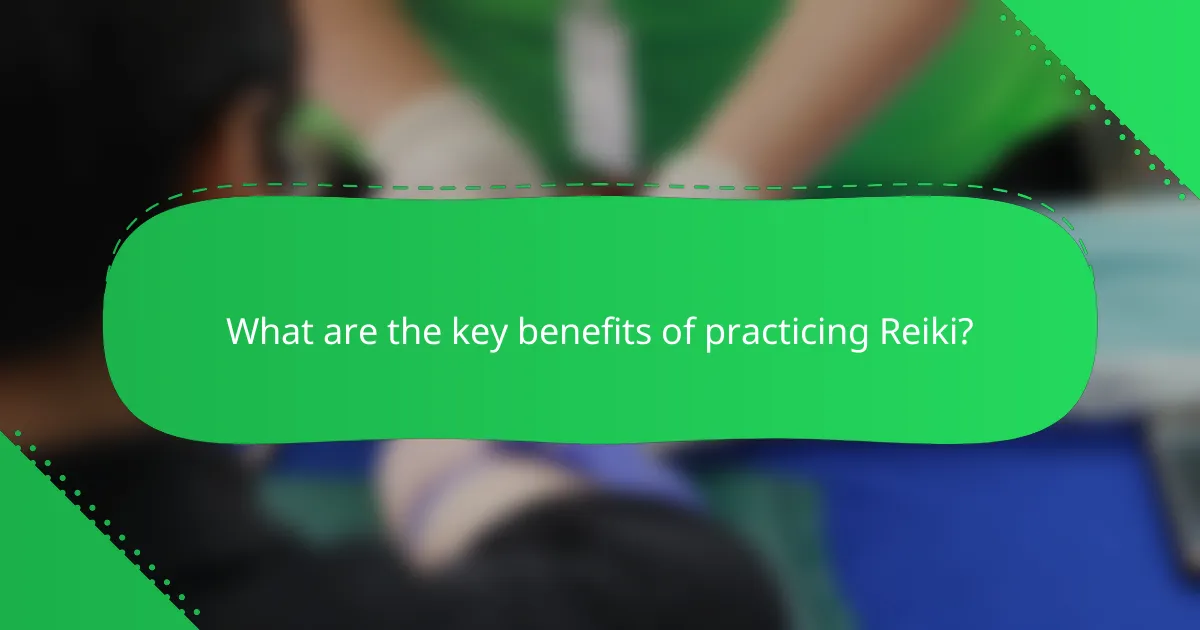
What are the key benefits of practicing Reiki?
Practicing Reiki offers numerous benefits, including stress reduction, pain relief, and emotional balance. It promotes relaxation and enhances overall well-being. Reiki can also support healing by boosting the immune system and improving sleep quality. Additionally, it fosters a sense of connection and spiritual growth, making it a holistic approach to health.
How can Reiki support physical health and well-being?
Reiki can significantly support physical health and well-being by promoting relaxation and reducing stress. This energy healing technique enhances the body’s natural healing processes, alleviating pain and improving overall vitality. Research indicates that Reiki can lead to lower blood pressure and improved immune function. It is also known to aid in pain management for chronic conditions, providing a holistic approach to health.
What emotional benefits does Reiki provide?
Reiki provides emotional benefits such as stress reduction, increased relaxation, and enhanced emotional clarity. Practitioners often report feelings of peace and balance after sessions. This holistic practice can help alleviate anxiety and promote a deeper connection with one’s emotions. As a result, individuals may experience improved mood and resilience in facing life’s challenges.
Why do individuals seek Reiki for stress relief and relaxation?
Individuals seek Reiki for stress relief and relaxation because it promotes emotional balance and physical well-being. Reiki utilizes gentle touch or distance healing to channel energy, reducing tension and anxiety. Studies indicate that Reiki can lower cortisol levels, enhancing relaxation and improving mood. Many practitioners report improved sleep quality and a sense of calm after sessions, making it an appealing option for stress management.
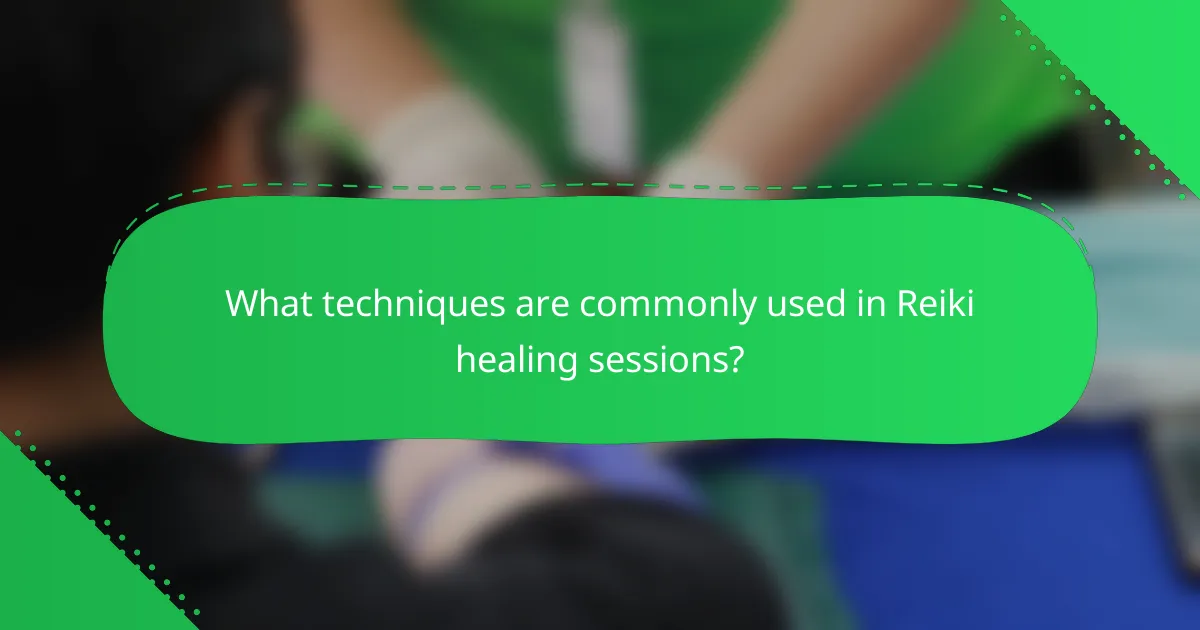
What techniques are commonly used in Reiki healing sessions?
Reiki healing sessions commonly use techniques such as hand placements, distance healing, and guided visualization. Hand placements involve the practitioner placing their hands on or near the recipient’s body to channel energy. Distance healing allows practitioners to send energy across space, promoting relaxation and balance. Guided visualization helps individuals focus on healing imagery, enhancing the overall experience. Each technique aims to promote relaxation, reduce stress, and facilitate emotional healing.
How does a typical Reiki session unfold?
A typical Reiki session unfolds through a series of structured steps designed to promote relaxation and healing. The practitioner begins by discussing the client’s needs and intentions. This is followed by the client lying down fully clothed while the practitioner lightly places their hands on or near the body.
During the session, the practitioner channels energy, facilitating a sense of calm and balance. The session typically lasts between 60 to 90 minutes, allowing ample time for deep relaxation. Clients often report feelings of warmth or tingling as energy flows.
After the session, the practitioner may provide insights or recommendations for ongoing self-care. This holistic approach emphasizes emotional and physical well-being, making Reiki a unique healing technique.
What role does the practitioner play during a Reiki session?
The practitioner serves as a channel for healing energy during a Reiki session. They facilitate the process by creating a safe and supportive environment, allowing the recipient to relax and receive energy. Practitioners assess energy flow and may use hand positions to enhance healing. Their presence and intention significantly influence the effectiveness of the session, promoting balance and well-being.
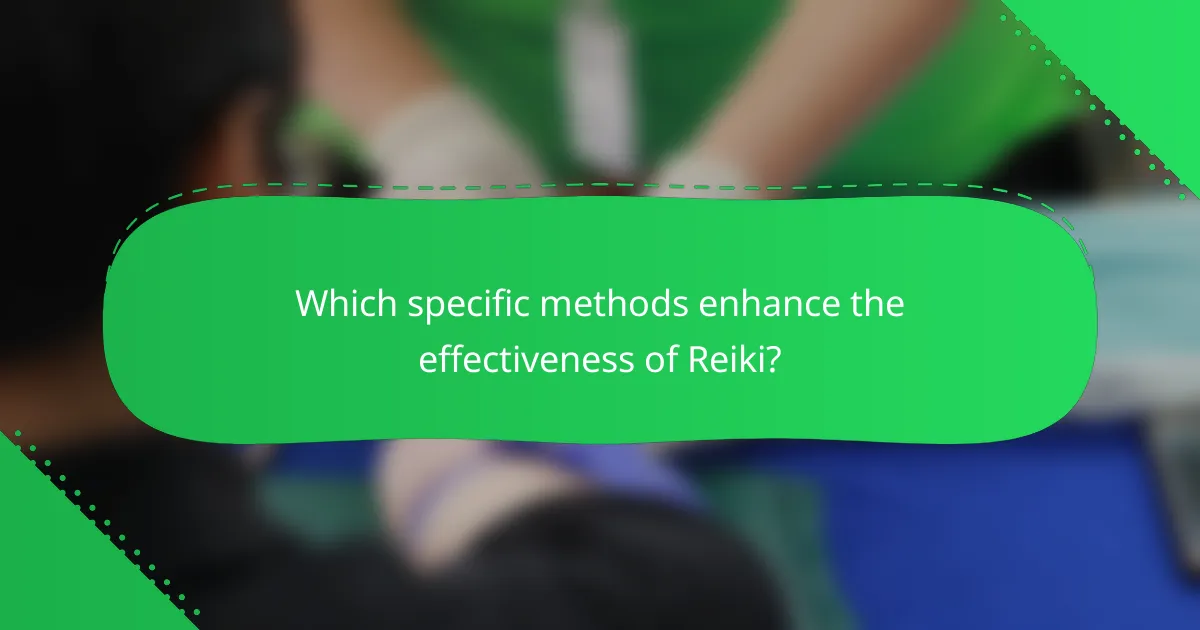
Which specific methods enhance the effectiveness of Reiki?
Reiki effectiveness can be enhanced through intention setting, breath control, and visualization techniques. Intention directs energy flow, while breath control promotes relaxation. Visualization aids in focusing energy on specific areas. These methods deepen the healing experience and improve outcomes.
How can visualization techniques be incorporated into Reiki practice?
Visualization techniques can enhance Reiki practice by focusing the mind and intention during healing sessions. Practitioners can use mental imagery to create a serene environment, visualize energy flow, or imagine the desired outcomes for healing. This approach deepens the connection to universal energy and strengthens the practitioner’s focus, leading to more effective sessions. Techniques may include visualizing colors associated with chakras or picturing the recipient surrounded by healing light. Such practices can amplify the benefits of Reiki, fostering a more profound healing experience.
What is the significance of hand positions in Reiki?
Hand positions in Reiki are significant as they facilitate energy transfer and healing. Each position corresponds to specific energy centers in the body. Proper hand placement enhances the practitioner’s ability to channel universal life force energy effectively. This practice promotes relaxation, reduces stress, and supports emotional balance. Unique attributes of hand positions, such as their alignment with chakras, contribute to the overall healing experience.
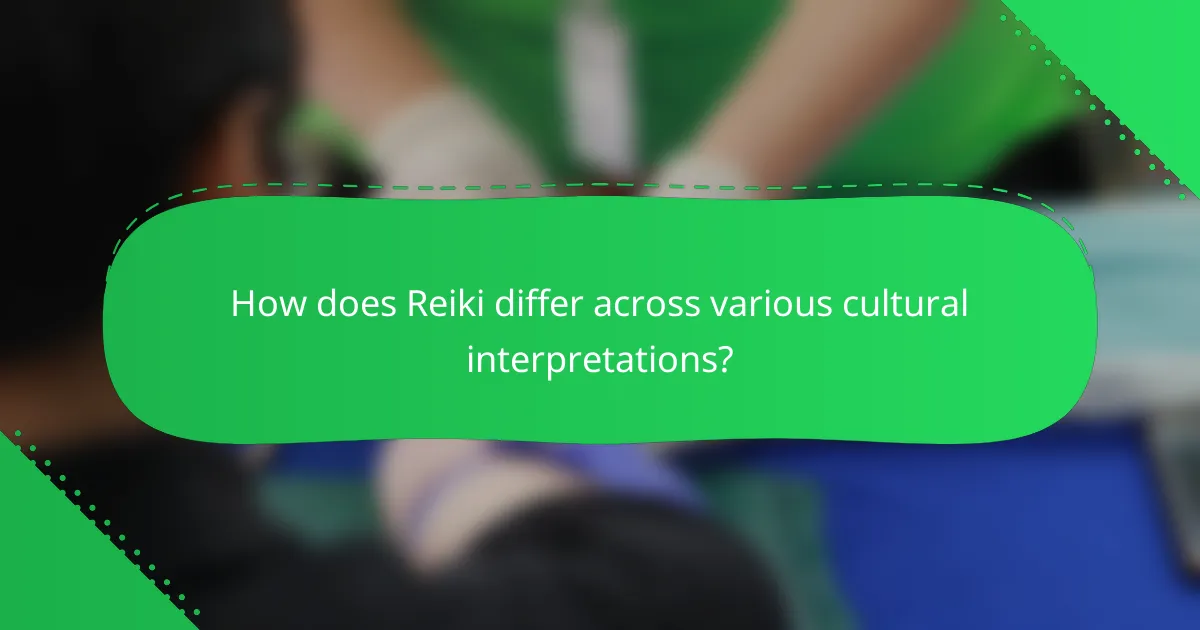
How does Reiki differ across various cultural interpretations?
Reiki varies significantly across cultures, influenced by local beliefs and practices. In Japan, Reiki emphasizes spiritual growth and meditation, while Western adaptations focus on physical healing and relaxation techniques.
Cultural interpretations also affect techniques. For example, traditional Japanese Reiki incorporates symbols and mantras, whereas Western practices often prioritize hands-on healing.
The benefits attributed to Reiki can differ as well. In Eastern cultures, it is often viewed as a holistic approach to wellness, while in Western contexts, it may be valued for stress relief and pain management.
These variations highlight the unique attributes of Reiki as it integrates into diverse cultural frameworks, shaping its practice and perception globally.
What unique practices are found in Japanese Reiki?
Japanese Reiki incorporates unique practices such as the use of specific hand positions, symbols, and mantras. Practitioners emphasize a deep connection to spiritual energy, often integrating meditation and mindfulness techniques. Additionally, the practice includes attunements, which are rituals that enhance the practitioner’s ability to channel healing energy. These elements contribute to its distinct approach within the broader Reiki framework.
How is Reiki perceived in Western healing traditions?
Reiki is perceived in Western healing traditions as a complementary therapy that promotes relaxation and stress reduction. Many practitioners view it as a holistic approach, integrating physical, emotional, and spiritual healing. Research indicates that Reiki can enhance well-being and support conventional medical treatments. Its principles, including energy transfer and intention, resonate with the growing interest in mind-body therapies in Western medicine. Some practitioners emphasize its unique attribute of non-invasive touch, differentiating it from other modalities.
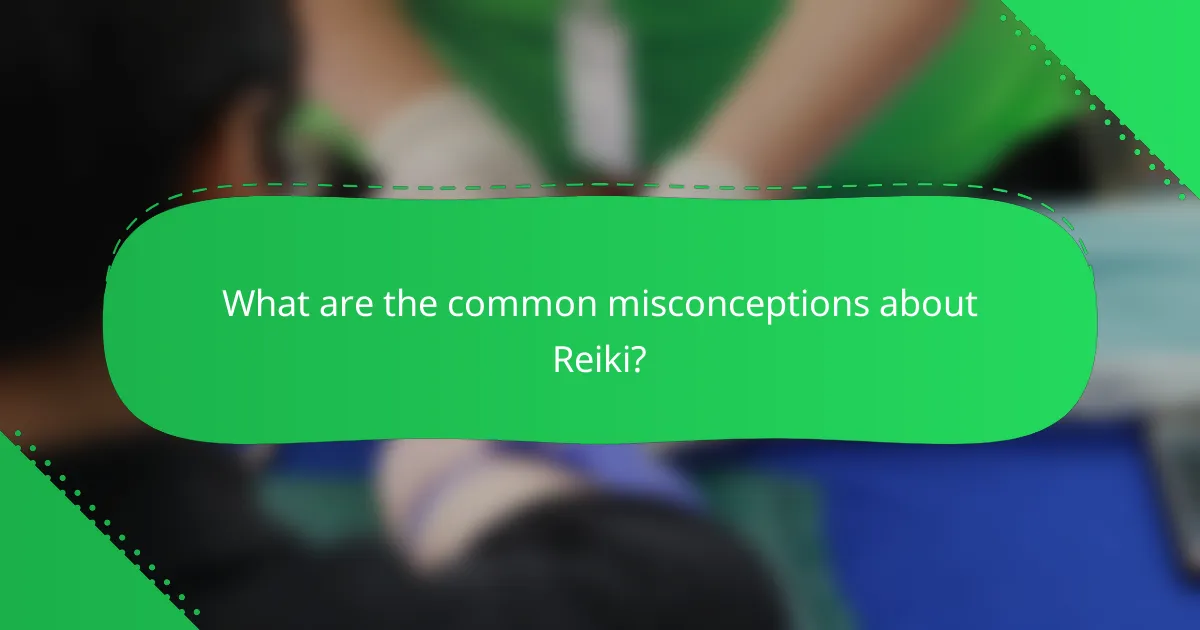
What are the common misconceptions about Reiki?
Many misconceptions exist about Reiki, often detracting from its true nature. One common belief is that Reiki is a form of massage, while it actually involves energy healing through light touch or no touch at all. Another misconception is that Reiki is a religion; it is a spiritual practice but not tied to any specific faith. Some people think Reiki is a substitute for medical treatment, but it is best used as a complementary therapy. Additionally, there is a belief that only certain individuals can perform Reiki, when in fact anyone can learn and practice it. Lastly, some assume that Reiki provides instant results, whereas its benefits may require multiple sessions to manifest fully.
Why do some skeptics question the efficacy of Reiki?
Skeptics question Reiki’s efficacy due to a lack of scientific evidence supporting its healing claims. Critics argue that anecdotal experiences do not constitute proof of effectiveness. Additionally, skeptics point to the placebo effect as a potential explanation for reported benefits. The absence of rigorous clinical trials further fuels doubts about Reiki’s reliability as a therapeutic practice.
How can understanding the science behind Reiki enhance its acceptance?
Understanding the science behind Reiki can enhance its acceptance by providing evidence-based insights into its benefits. Scientific validation fosters trust and encourages broader adoption. Research shows that Reiki can reduce stress, promote relaxation, and enhance emotional well-being. These measurable outcomes align with modern health paradigms, making Reiki more appealing to skeptics. Additionally, understanding the mechanisms of energy transfer in Reiki can demystify the practice, making it more relatable. As a result, integrating scientific perspectives can bridge the gap between traditional beliefs and contemporary healthcare practices.
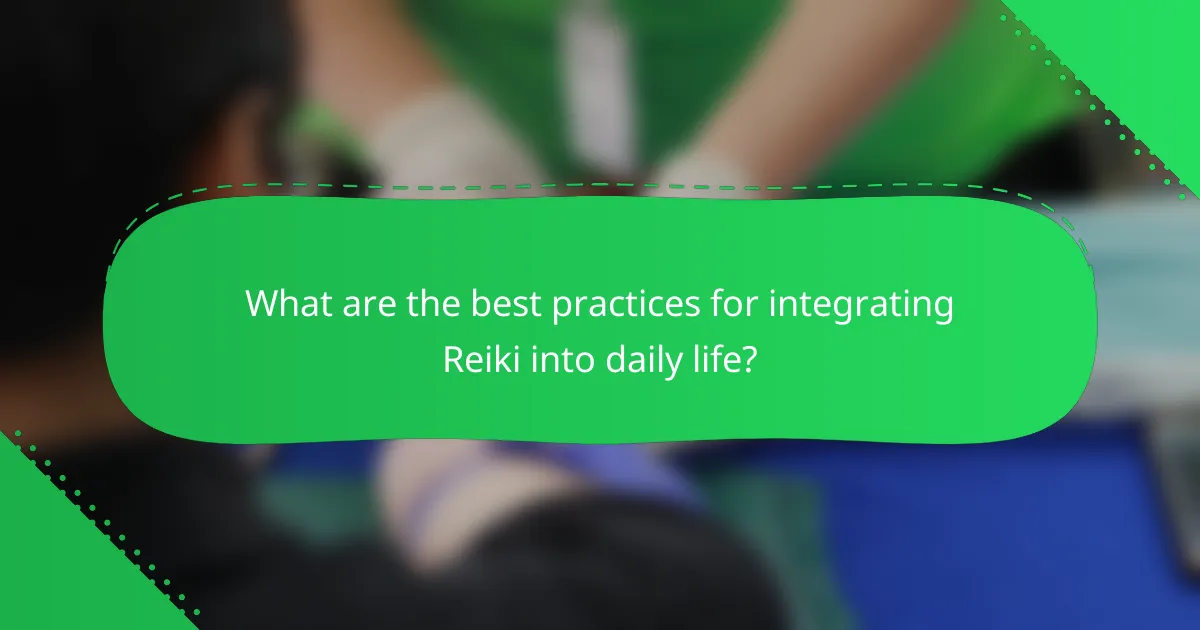
What are the best practices for integrating Reiki into daily life?
Integrating Reiki into daily life enhances well-being and promotes relaxation. Start by setting aside a few minutes each day for self-healing practices. Create a dedicated space for Reiki sessions, ensuring it is quiet and free from distractions. Incorporate mindfulness techniques to deepen your connection with Reiki energy. Use affirmations to reinforce positive intentions and visualize healing during sessions. Engage in regular practice, whether through self-treatment or participating in group sessions, to strengthen your skills and understanding of Reiki.
How can individuals self-practice Reiki techniques at home?
Individuals can self-practice Reiki techniques at home by following simple steps. Begin by creating a quiet space free from distractions. Sit or lie down comfortably, focusing on your breath to promote relaxation. Use hand positions on your body or around it, channeling energy to areas that feel tense or painful. Visualize healing light and set intentions for your practice. Regular sessions can enhance emotional well-being and promote physical healing. Consider incorporating guided meditations or online resources to deepen your understanding and technique.
What tips can enhance the effectiveness of personal Reiki sessions?
To enhance the effectiveness of personal Reiki sessions, create a calm environment, set clear intentions, and practice mindfulness. Focus on breathing techniques to deepen relaxation and invite energy flow.
Consider using crystals or essential oils to amplify the healing experience. Regular practice can lead to greater sensitivity to energy, improving session outcomes.
What common mistakes should be avoided when practicing Reiki?
Practicing Reiki can be ineffective if common mistakes are made. Avoiding these errors enhances the healing experience and effectiveness.
1. Neglecting self-care: Practitioners must prioritize their own well-being to channel energy effectively.
2. Overexerting energy: It’s essential to avoid draining oneself; balance is key for sustainable practice.
3. Ignoring boundaries: Respecting personal and client boundaries ensures a safe and trusting environment.
4. Lack of intention: Practicing without clear intentions can lead to ineffective sessions; focus is crucial.
5. Disregarding training: Skipping proper training can result in inadequate techniques and understanding.
6. Underestimating the environment: A calm and supportive environment enhances the effectiveness of Reiki sessions.
